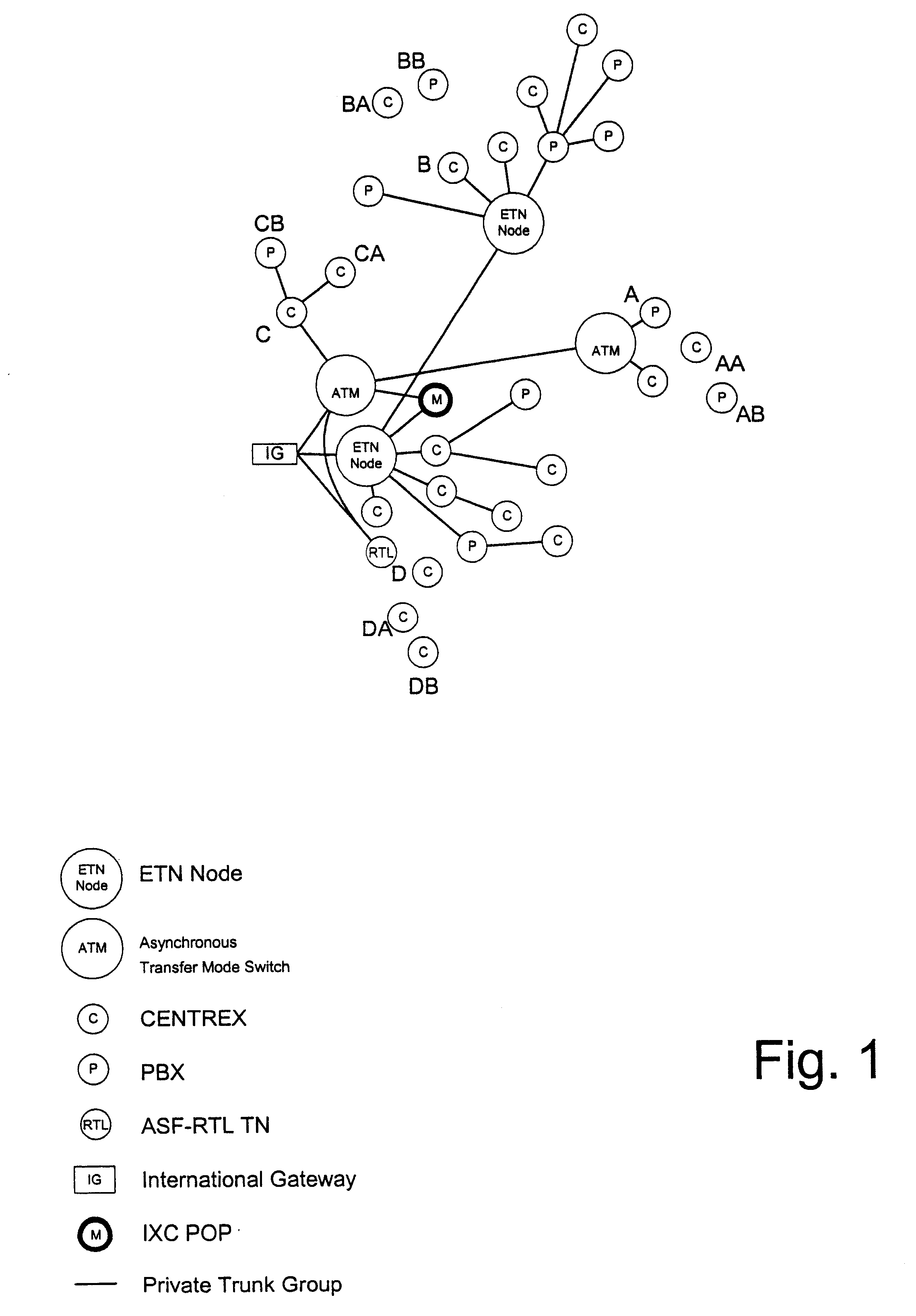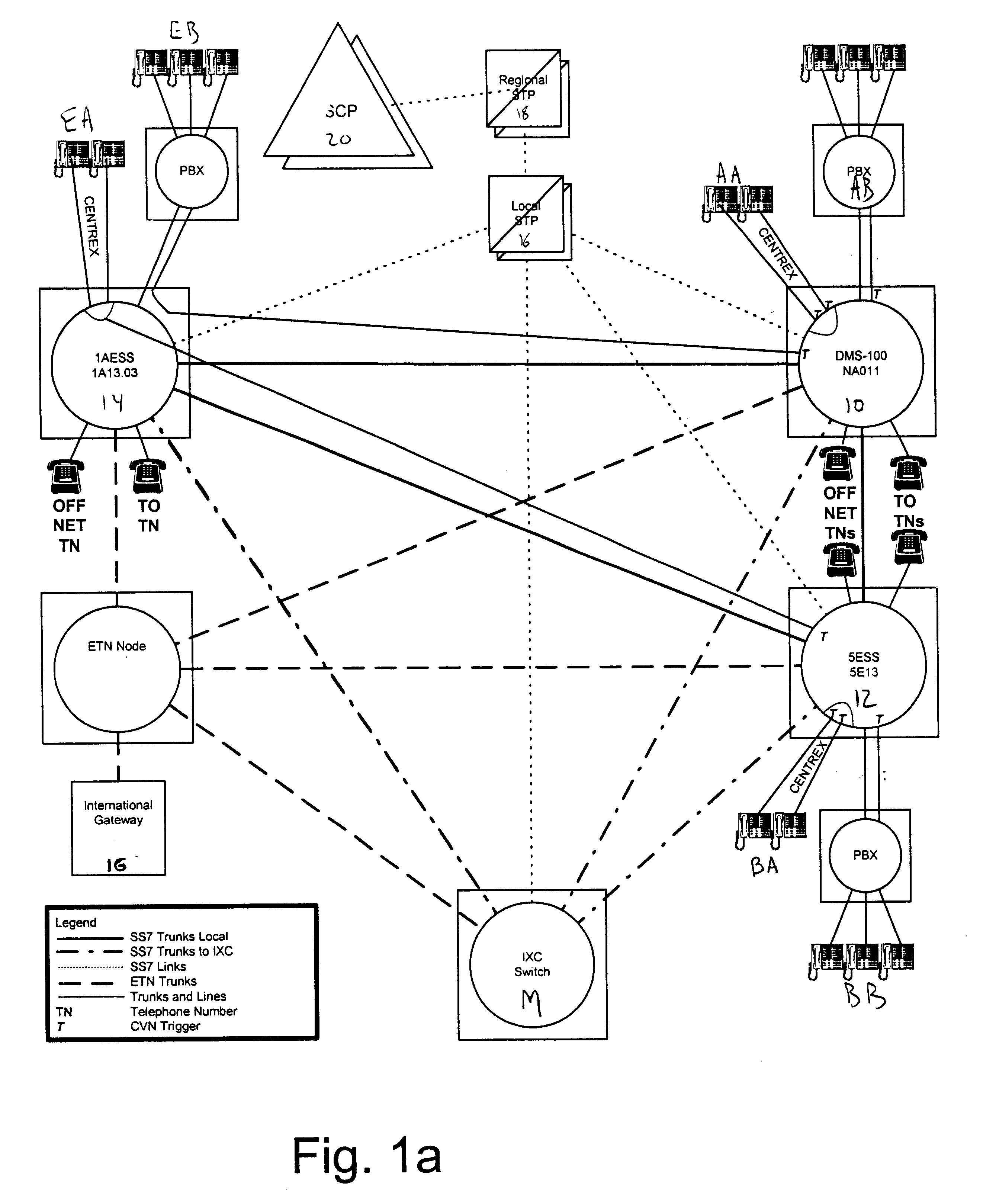Method and system for processing telephone calls via a remote tie-line
a telephone call and remote tie-line technology, applied in the field of telecommunications, can solve the problems of limited flexibility, onenet and mci perspective does not, however, provide a predictable monthly bill
- Summary
- Abstract
- Description
- Claims
- Application Information
AI Technical Summary
Problems solved by technology
Method used
Image
Examples
Embodiment Construction
In view of the above, the present invention through one or more of its various aspects and / or embodiments is presented to accomplish one or more objectives and advantages, such as those noted below.
An aspect of the present invention provides a method for efficiently routing a call from a private telecommunications network through a public switched telephone network (PSTN) and multiple trunk groups, including at least one private trunk group. The private telecommunications network may include both central exchange service (centrex) and private branch exchange (PBX) systems. The method includes setting a called party ID to correspond to an automatic selection of facilities-remote tie-line (ASF-RTL) telephone number and routing the call through a public trunk group from a first switch to a switch hosting the ASF-RTL telephone number. The call is then routed through a private trunk group from the switch hosting the ASF-RTL telephone number to a private customer facility hosting the call...
PUM
 Login to View More
Login to View More Abstract
Description
Claims
Application Information
 Login to View More
Login to View More - R&D
- Intellectual Property
- Life Sciences
- Materials
- Tech Scout
- Unparalleled Data Quality
- Higher Quality Content
- 60% Fewer Hallucinations
Browse by: Latest US Patents, China's latest patents, Technical Efficacy Thesaurus, Application Domain, Technology Topic, Popular Technical Reports.
© 2025 PatSnap. All rights reserved.Legal|Privacy policy|Modern Slavery Act Transparency Statement|Sitemap|About US| Contact US: help@patsnap.com



